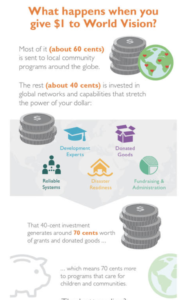Partners in health is an INGO that was founded in 1987 by numerous people. They were founded because the founders wanted to make basic health care more accessible to low income countries. They help provide hospitals, train local people to continue the work after they leave, and help treat common diseases in developing countries such as malaria and AIDS. Its mission statement is as follows: Our mission is to provide a preferential option for the poor in health care. By establishing long-term relationships with sister organizations based in settings of poverty, Partners In Health strives to achieve two overarching goals: to bring the benefits of modern medical science to those most in need of them and to serve as an antidote to despair.
According to the PIH Canada website PIH was founded to aid Zanmi Lasante which translates to partners in health. The American organization wanted to provide aid in ways that are not accessible to certain countries. Its’ aim was to support, not replace, the original organization. The original organization, founded in Haiti, served to educate health outreach workers and to help villages with treatment and education about preventable diseases (PIH Canada). This organization, compared to other NGOs that we have talked about in class seems to really aim to educate the people. They want to provide not only the tools but the access to knowledge on how to sustain the work that PIH puts in. In fact, in Rwanda, PIH started the University of Global Health and Equity. This school aims to educate young medical professionals to serve communities in need (UGHE, 2018). While the school is highly selective it provides education to the students that deserve admittance regardless of their ability to pay the tuition (UGHE). Further, the majority of students are Africans which means this organization is aiming to educate the community member rather than teach Americans to go into these places and feel superior to the people that they are helping (UGHE, 2018).
Currently, PIH has impacted millions of lives. The PIH website has a link to each of their annual reports and comprehensively lays out how they have helped communities along with statistics to back it. These numbers are as follows:
- <4,000 people treated for cancer
- UGHE provided education to students from 22 different countries
- Supported over 80 clinics around the world
- Over 300 community health workers deployed around the world
Clearly the impact of this organization is vast. Since they provide medical care almot for free they must receive a lot of donations to keep the quality of work that they do. In 2017, they received over $30,000,000 dollars from grants and the government (PIH Fiscal Report). Based on this fiscal report they spend almost $150,000,000 a year on program services, which goes undefined, and $5,000,000 on development which also goes undefined. Based on this information, the money they are receiving is actually going towards these clinic and treatments they give out. In the past, they have received grants from the Gates Foundation, partnered with the American Cancer Society, as well as funding from the Cummings Foundation which put money towards the building of UGHE (PIH). A concrete timeline of their work can be found here.
Upon further research and more concrete google searches I stumbled upon some criticisms of Partners in Health. From the outside they seem like the ideal INGO; but, when actually receiving the education from PIH founders and hearing opinions of locals surrounding their work this is not the case. One of the founders of PIH admitted that the work they are doing is patching up wound but not providing the stiches needed to actually fix the problem of poverty that is causing these diseases (Dubal, 2012). According to this blogger there was a clinic bombed in Peru, which I could find no articles on. This bombing, though, does show a level of discontent from the people. PIH makes partnerships around the world that will help fund them and look the best in the public eye but are not taking into consideration the political and historical context of the people they are partnering with (Dubal, 2012). For example, if they are partnering with governments that are not helping the country become equitable then the citizens will not view PIH as the helpful organization they come across as. This an important note to make because the main results I found during this research were all positive. I really had to dig to find negative things aobut this organization. But, the blog I found along with the anecdote of the bombing in Peru let us know that there is something deeper to be explore with this organization. Beyond just this blog post I would like to dig some more on this organization and see what else I can find with more time to research.
Lastly, the OXFAM issue. I unfortunately could not find anything about PIH’s opinions towards the OXFAM incident. They do, however, on their website have a link to their policies surrounding gender based violence. They have started an education program in Haiti to try and prevent GBV (PIH). This program is relatively new (2017) so there are no long term results yet. They help treat both in the moment, such as right after a rape, as well as provding therapy to ensure the survivor is able to process their trauma. They also say that they train their volunteers in how to react if someone has had gender based violence experiences. Again, this is from the website and I was unable to find anything else regarding this. I would like to do more research on this issue.
“COLON CANCER SCREENING.” PIH Health, www.pihhealth.org/.
Combating Violence against Women.” Partners In Health, www.pih.org/article/combating violence-against-women.
Dubal, Sam. “Being Ethical in an Unethical World.” Renouncing Paul Farmer: A Desperate Plea
for Radical Political Medicine, 1 Jan. 2012, samdubal.blogspot.com/2012/05/renouncing-paul-farmer-desperate-plea.html.
Hamblin, James. “The Moral Medical Mission: Partners In Health, 25 Years On.” The Atlantic,
Atlantic Media Company, 4 Oct. 2012, www.theatlantic.com/health/archive/2012/10/the-moral-medical-mission-partners-in-health-25-years-on/262974/.
“History.” Partners In Health Canada, pihcanada.org/our-story/history/.
“Our Founders.” Partners In Health, www.pih.org/pages/our-founders.
“University of Global Health and Equity Impact Report 2018.” 2018.

I picked this picture because the blog from the critique of the organization fits this image. It is like PIH is the dog doing the work they can saying everything is fine but ignoring the historical context of the countries they go into which is the fire





